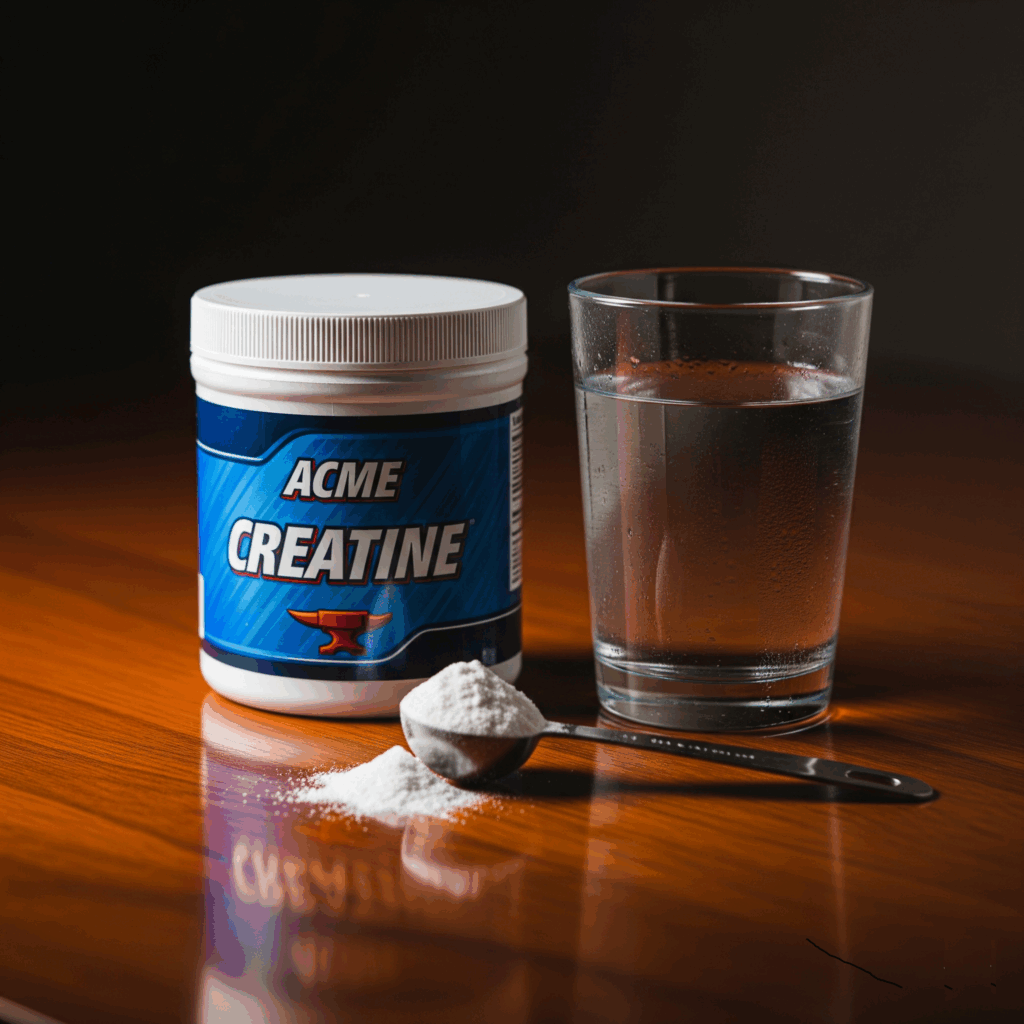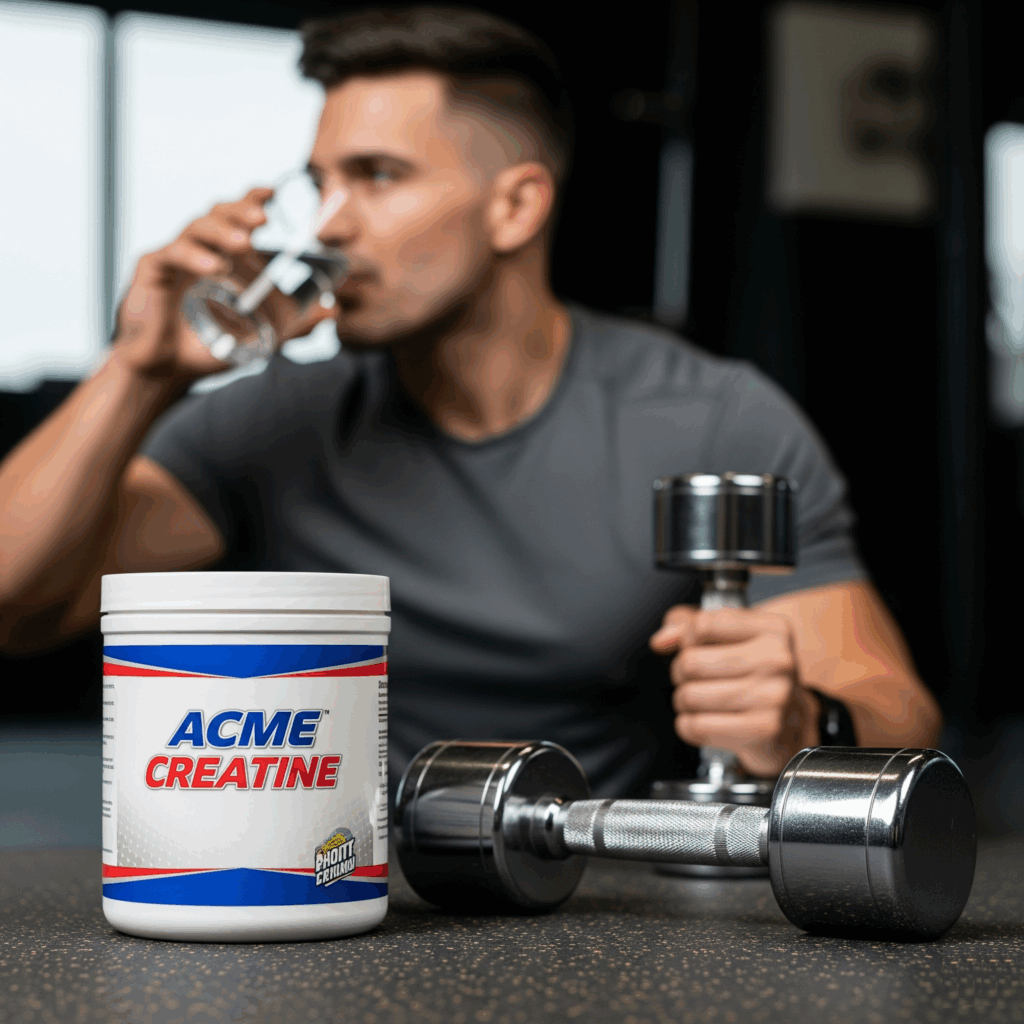By a Man Who Believes in Strength — But Only When It’s Earned and Understood

Let me say this plainly:
Strength is not a gift.
It is a debt paid in sweat, time, and attention.
And when you seek to improve it — whether for health, function, or the quiet pride of lifting more today than yesterday — you have two choices:
- Chase every supplement with a flashy label and a clinical-sounding name.
- Or, study the few that have stood the test of time — not marketing, but decades of real-world use and peer-reviewed science.
Creatine is one of those few.
It is not magic.
It is not a steroid.
It is not a shortcut.
But it is one of the most studied, safest, and most effective compounds ever used to support human performance — especially for those who train with intent, not just intensity.
So let’s talk about creatine. Not like a salesman. Not like a skeptic.
Like a man who wants to know what he’s putting into his body — and why.
The Science: What Creatine Actually Is
Creatine is not foreign.
It is not synthetic in the sense of being “man-made poison.”
It is a compound your body already produces — in the liver, kidneys, and pancreas — from the amino acids glycine, arginine, and methionine.
It is stored primarily in muscle tissue, where it helps regenerate ATP — the cellular energy currency that powers every contraction, every sprint, every lift.
And yes — you also get creatine from food.
Mainly red meat and fish.
But unless you’re eating a pound of steak daily, your natural intake is low.
So supplementation?
It’s not about introducing something alien.
It’s about optimizing what’s already there.
The Advantages: What It Does (And What It Doesn’t)
Let’s cut through the noise.
✅ What Creatine Does:
- Increases work capacity. You can do more reps, more sets, more sprints before fatigue hits.
- Improves strength gains over time — not overnight, but cumulatively, when paired with resistance training.
- Supports brain function. Studies show benefits in memory, focus, and cognitive processing — especially under stress or sleep deprivation.
- May aid recovery. Some evidence suggests it reduces muscle damage and inflammation post-exercise.
- Is effective at 3–5 grams per day. No need for loading phases, unless you want faster saturation.
This is not anecdote.
This is meta-analysis.
Over 500 studies.
Two decades of consistent results.
Creatine is, by far, the most proven supplement for improving physical performance in short-duration, high-intensity activities — exactly the kind that build real strength.
❌ What Creatine Does Not Do:
- It will not make you “huge.”
- It will not replace training.
- It will not burn fat.
- It will not “boost testosterone” (a myth with no evidence).
- It is not a stimulant. You won’t feel “amped.” You’ll just be able to do one more rep.
And that — that extra rep — is where real growth happens.

The Doubts: Safety and Long-Term Use
Now, let’s address the whispers.
“It harms your kidneys.”
No. Not in healthy individuals.
Dozens of long-term studies — including trials lasting five years — show no adverse effects on kidney function in people with normal renal health.
If you have pre-existing kidney disease, consult your doctor. But for the rest of us? This fear is outdated, unsupported, and overblown.
“It causes cramps or dehydration.”
Also false.
In fact, creatine draws water into muscle cells — which may improve hydration at the cellular level.
Athletes in hot environments who take creatine often show better thermoregulation, not worse.
“It’s only for bodybuilders.”
Wrong.
It’s used by:
- Soldiers in special operations
- Older adults fighting sarcopenia
- Vegetarians (who get little creatine from diet)
- People recovering from injury
- Even those managing neurological conditions (under medical supervision)
Because strength isn’t just for looks.
It’s for function.
And function keeps you independent.
The Reality: It’s a Tool — Not a Miracle
Creatine doesn’t build muscle.
You build muscle.
Creatine just gives you the metabolic edge to do it more efficiently.
Think of it like this:
- Your training is the architect.
- Your nutrition is the builder.
- Your sleep is the foreman.
- Creatine? It’s the extra worker on the crew — quiet, reliable, always showing up.
And like any tool, it works best when used correctly.
How to Use It (The Rational Way)
- Dose: 3–5 grams per day.
- Can be taken anytime — no need to “time” it with workouts.
- Mix with water, juice, or add to a shake.
- Form:Creatine monohydrate — not “nano,” not “hydrochloride,” not “buffered.”
- It’s cheaper, better studied, and just as effective.
- If it’s white powder in a bag, and the label says “creatine monohydrate,” you’re good.
- Consistency: Take it daily.
- It takes 2–4 weeks to saturate muscles.
- Skip days, and you lose the benefit.
- Expect:
- A slight water weight gain (2–4 lbs) in the first week — intramuscular, not bloating.
- Better endurance in sets.
- Slightly faster recovery.
- No dramatic changes — just steady, silent improvement.
Final Thought: Strength Is Still Earned
Creatine won’t turn you into a superhero.
But it will help you become stronger, faster, and more resilient — if you’re already doing the work.
And that’s the point.
You don’t take creatine to avoid effort.
You take it to honor effort — to get the most from every drop of sweat.
So if you’re serious about strength — not for show, but for life —
try creatine.
Not because it’s trendy.
But because it’s proven.
And then keep lifting.
Keep eating.
Keep sleeping.
Because in the end, no supplement replaces the one who shows up.
